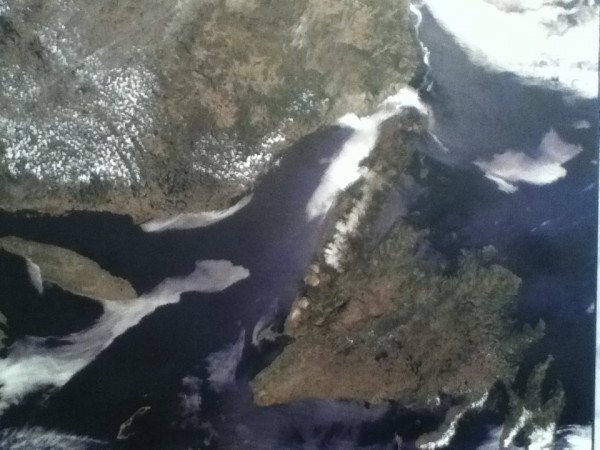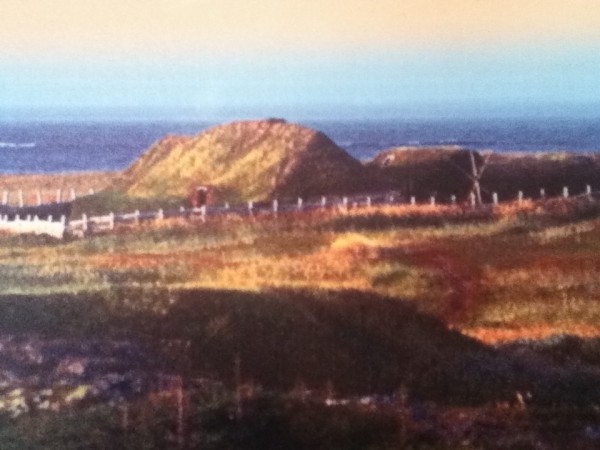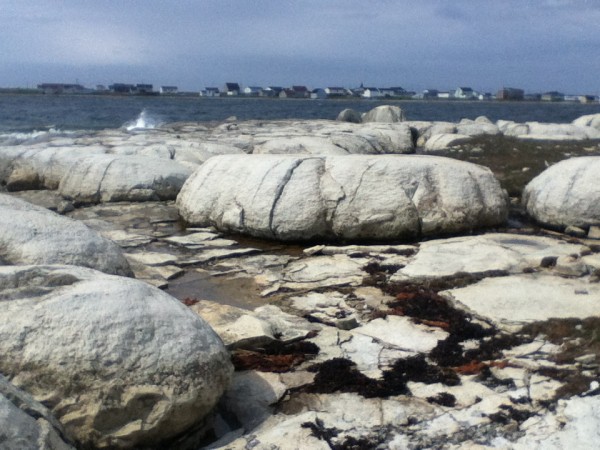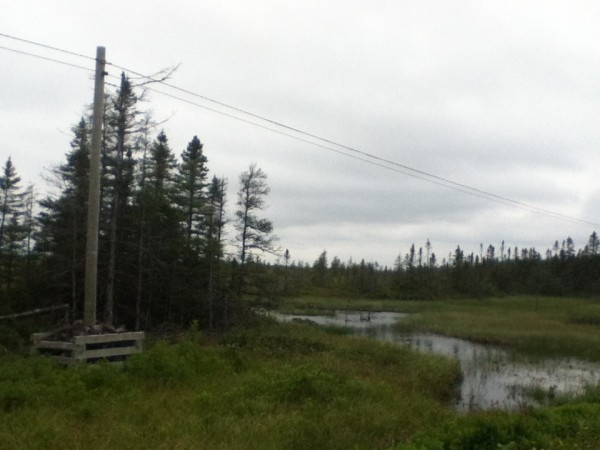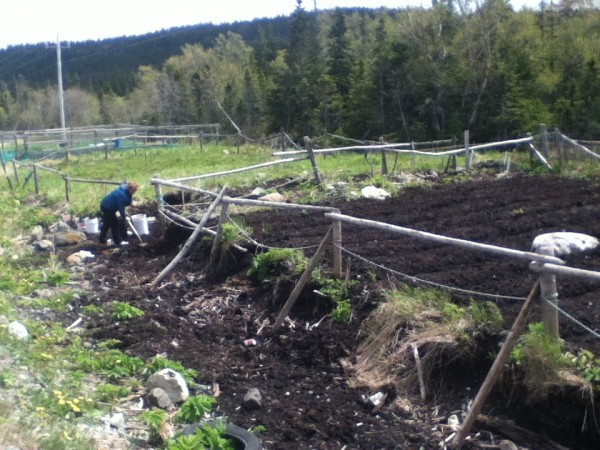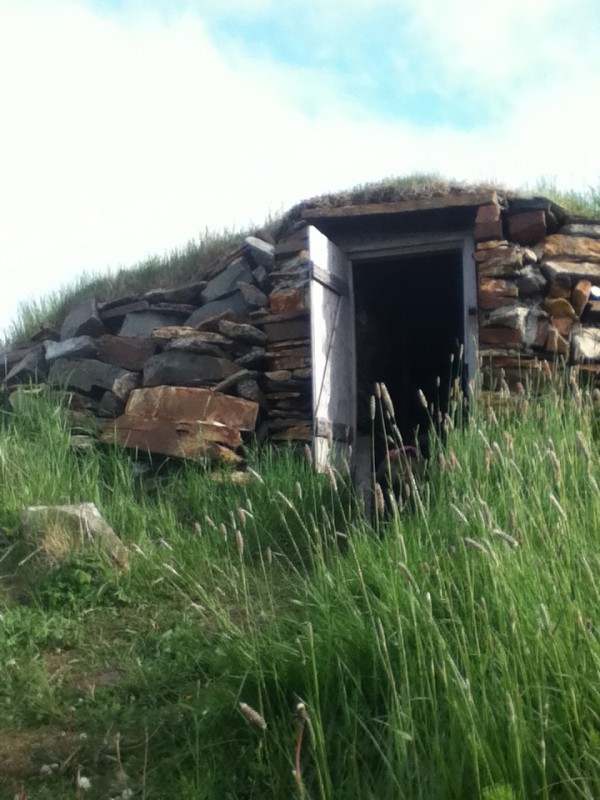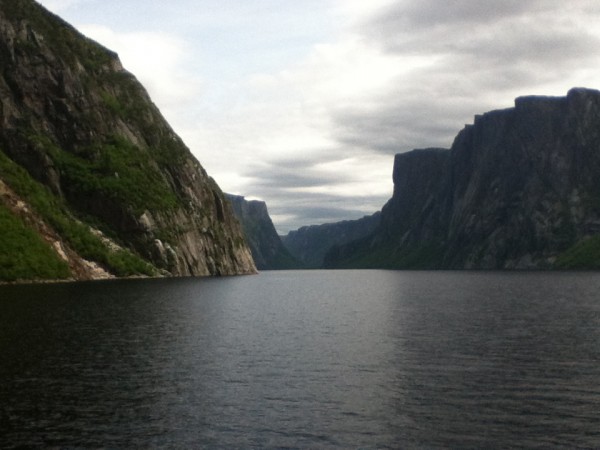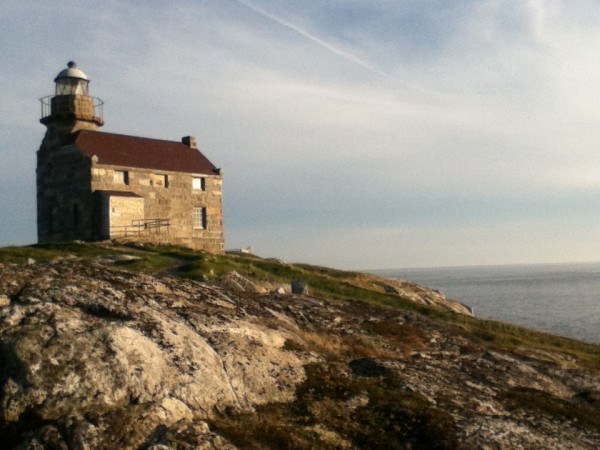Although the East Coast of Newfoundland is named “Iceberg Alley”, the Bergs arrive later there so the island’s Iceberg Festival is always held at the most Northwestern tip of Newfoundland in the small town of St. Anthony (pronounced “ANN-tunny” without the H, in the Irish Tradition, just like the number “30” rhymes with dirty). You can see from the bird’s eye view in winter below, with Labrador on top separated from Newfoundland with pack ice. It is more likely that you could ski-doo between Labrador and Newfoundland in winter, as the ferry cannot use the shortest route between the two parts of the province for much of the year. We volunteered at the Festival and met the the local celebrities; the “Iceberg Hunters”. Featured in a 4 part series premiered on the Weather Channel in the U.S., this was the first public showing in Canada.
Two old farts and the “Greenhorn”, an adorable interior decorator son from St. John’s, harvested Bergie Bits to provide a local water bottler with “the purest water on earth”. Actually, they spend a bucket of ammunition shooting holes in the biggest iceburgs hoping to create a crack, and a fall that breaks the big chunk into manageable bits to load on the boat. These guys were just so funny, on and off camera, and always at the expense of the the earnest Greenhorn. Funny…unless you had to work for them. It reminded me of working for my father; my brother and I started at age 12 to find our own summer jobs to avoid such a fate. The Festival also had iceberg wine and champagne tastings, boat and ATV tours, Irish trad music and community dances, wild berry tastings like “Bakeapple”, and Viking saga storytelling by firelight in sod huts at L’Anse Au Meadows archeological site below.
Further south, in Flowers Cove, Thrombolites litter the shallow water. 3.5 billion year old “clots” of sedimentary material cemented by cyanobacteria A.K.A., blue-green algae. They are found only here and in Western Australia. They are a good indicator of the only life that existed on the planet in that epoch.
Away from the coast, the country is 95% bogs. Power and telephone wires can’t be anchored in a bog so there are built up “rock boxes” for added support all along the highways. There have been 636 auto/moose collisions so far this year, including 6 fatalities. In areas of high moose activity and fast highways with poor sight lines, there are motion detectors pointed toward the forest that flash warning lights 1/4 mile in each direction to warn of moose approaching the road.
Canada is rich with minerals and water. It makes for interesting politics. Quebec’s maps show Labrador within their province, but Labrador and Newfoundland are one province, and a rich one due to the minerals, ores, and hydroelectric power produced in Labrador and sold to New York. The folk music here reflects fierce independence from Quebec, and hardly a soul here speaks French.
Bogs birth bugs, and twice when we were stopped in provincial parks to empty our sewage tank, we have been swarmed by blackflies and mosquitoes. With hundreds of biting bugs inside the vehicle in the four minutes needed to dump, the ranger advised us to, “Open the windows and drive 120!”…we assumed he meant that in kilometers. It worked, but we may have abandoned the idea of a summer road trip to Alaska , the Yukon and the Northern Territories as we would be prisoners stuck inside the Roadtrek, hiding out. The forests across Newfoundland are mostly “Tuckamore”; fir and spruce trees, spindly, sparse, and with a shallow root system in the bogs; clearly at risk for blowing over in gale force winds if they were taller or leafier. Similar to the trees, the residents adapt to the seasons too; there are many root vegetable gardens in small plots along the highways as seen above. Fenced to keep the moose out, wedged in the open space between the road and forest, the plots receive both windbreak and maximum sun in these long northern summer days, and the property belongs to the “Crown” so the residents own it. I just can’t imagine the California Highway Patrol getting down with highway gardeners.
Wouldn’t you know that Newfoundland is also the “Root Cellar Capital of the World” with 136 root cellars to visit in the small town of Elliston, in the East on the Bonavista Peninsula.
Gros Morne National Park features a hike on the earth’s mantle via trails over the Tablelands, and a boat tour of the “Fjords” on Western Brook Pond. Formed by glaciers, this was a true fjords until the delta was pushed up from continental thrust and bog took over creating a pond. The salt water was slowly replaced with fresh, and now it is so pure, it has insufficient ions to conduct electricity so the park pumps don’t work in it.
Although we saw humpback whales (small spouts and dominant splashy tails) from the shore in St. John’s (next blog, East Coast Newfoundland), our best sighting was a pod of Orcas, four adults and 2 calves that circled in front of us for 30 minutes while fishing for capelin in front of the Rose Blanche granite lighthouse, engineered by Robert Lewis Stevenson’s family. It helps that Orcas have a huge spout and dominant black dorsal fin as we could follow them out to sea for a long time as well. We are so used to whale watching in California where they are migrating so you see them for an instant. Here and in St. John, the whales stay in place and fill up on capelin in preparation for migration south at the end of summer.
…and then there is the sweet, huge, and well-padded “Newfie”, symbol of winter, seen in an art exhibit at the Rooms in St. John, and as an ambassador for the island. This ten-month old puppy “Roland”, weighs 150 lb and attended his first competition last week, where he peed on the judge…Wow! I’ve wanted to do that a few times!


